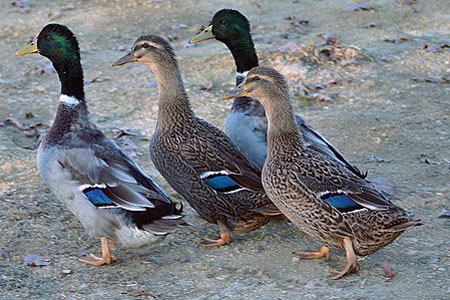
The Rouen duck originates from France, where farmers have raised the breed for hundreds of years. Rouens arrived in the United States in 1850 and were admitted to the American Standard of Perfection in 1874.
Physical Attributes
Rouens look like Mallards, only they are considerably larger. And they don’t fly nearly as well, making them suitable for backyard ponds. As another plus, they are less noisy than some of the other duck breeds.
Like the Mallard, the Rouen drake has a green head and a white band around its neck. The back is dark gray, while the underside is light gray. Blue feathers grace the wings.
The Rouen duck has muted brown-and-black camouflage plumage. Like the drake, she also has blue wing feathers.
Breed Qualities
Rouens are a slow-growing meat breed. They take 6 to 8 months to reach 5 pounds (hens) to 7.5 pounds (drakes). Because they are so heavy, they can be susceptible to bumblefoot, especially if kept in a hard-packed or rocky yard.
The hens lay around 160 large to extra-large eggs per year, or sometimes more, and typically will brood. Egghell color can be either white or pale blue-green.
These docile ducks make terrific backyard pets that also provide effective insect control. They are good foragers and are therefore easy keepers. All these great features make the Rouen duck an excellent choice for the beginning duck keeper.
And that’s today’s news from the Cackle Coop.
Gail Damerow is the author of An Absolute Beginner’s Guide to Raising Backyard Ducks : Breeds, Feeding, Housing and Care, Eggs and Meat.

